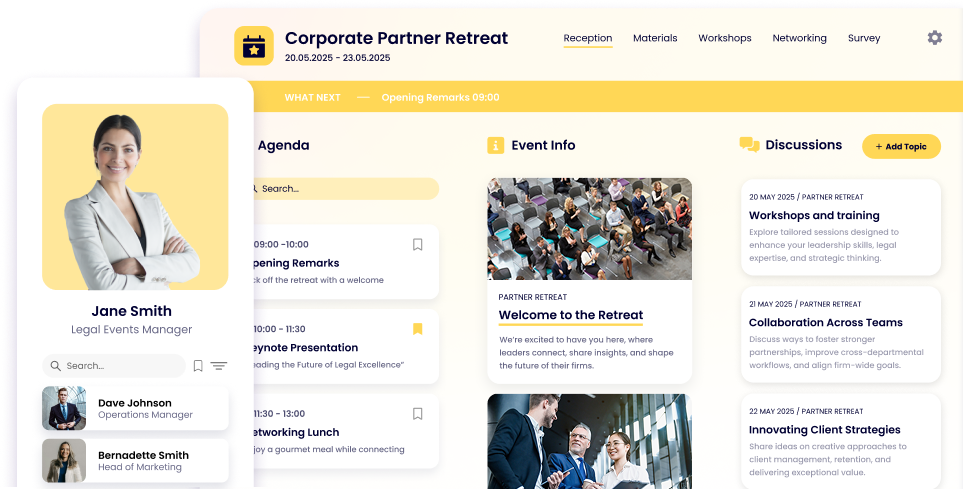Ultimate Guide: How to do SEO for mobile apps in 5 steps

Niamh Conneely | Marketing Executive

Google decided in 2019 that the mobile-first index would be enabled by default for all new websites. With the majority of web traffic now coming from mobile devices, Google will direct searches to mobile-friendly sites first, and importantly, offer suggestions matching mobile apps with related search terms.
Do Apps Use SEO?
The idea that mobile apps use SEO might initially seem odd. After all, SEO is a term we usually associate with websites and their ranking on search engines like Google. But think about how you find apps — you almost always use some kind of search function.
Apps are even directly indexed in most search engines, including Google and Bing. So Apps now have a direct line to appear in search results, making SEO an essential tool for app developers and marketers.
This integration means that the content within your app, much like the content on a website, can be optimized to appear in search engine results.
What does SEO mean for an App?
For an app, SEO means optimizing its presence so it can be discovered through search engine queries.
Effective SEO strategies for apps ensure they show up in Google searches, especially when users are looking for solutions that the app provides. It involves:
- optimizing the app’s content
- utilizing keywords
- improving overall visibility to search engines
This process helps in driving organic traffic to the app’s listing on the app store or its landing page, thus increasing the chances of downloads and active usage
Why is SEO for mobile apps important?
SEO for mobile apps is crucial in today’s digital landscape. With the majority of internet traffic stemming from mobile devices, understanding the ins and outs of SEO for mobile apps is vital for achieving visibility and user acquisition. Geting a good search engine results page (SERP) ranking allows your app to be organically discovered by users actively seeking similar solutions.
This increased visibility not only leads to more downloads but also encourages brand recognition and trust. Neglecting effective SEO for mobile apps can leave your app hidden in the vast app stores, limiting its potential reach. And as we all carry out more and more work using our smartphones, enterprise apps are going to become the norm for businesses with staff on-the-go.
By mastering SEO for mobile apps, which includes optimizing app titles, descriptions, keywords, and user reviews, you can differentiate your app and boost its chances of ranking prominently in app store searches and recommendations. In essence, SEO for mobile apps goes beyond traditional SEO, encompassing a comprehensive approach to enhance your app’s discoverability, user engagement, and long-term success in the mobile ecosystem.
SEO vs ASO
While SEO (Search Engine Optimization) and ASO (App Store Optimization) share the goal of improving visibility and downloads, they target different platforms.
SEO focuses on optimizing content for search engines like Google, making your app more discoverable to users searching online.
ASO, on the other hand, optimizes your app specifically for app store platforms (like Apple App Store and Google Play Store), enhancing its visibility in app store search results and rankings.
Both are essential for a comprehensive digital marketing strategy, but they require different approaches and tactics to succeed.
How Do You Optimize an App for SEO?
Optimizing an app for SEO involves several strategies aimed at making your app more visible in search engine results. This includes:
- Implementing app indexing: This allows your app content to appear in Google search results, driving users directly to your app or its listing in the app store.
- Optimizing in-app content: Ensure that the content within your app is relevant, keyword-rich, and provides value to your users. This content should be easily crawlable by search engines.
- Creating a mobile-friendly landing page: A landing page for your app that’s optimized for SEO can help increase your app’s visibility. Use relevant keywords, meta descriptions, and engaging content that links to your app store page.
- Building quality backlinks: Just like with traditional SEO, backlinks to your app’s landing page from reputable sites can improve your app’s search ranking.
How Do You Optimize an App for ASO?
ASO, or App Store Optimization, focuses on improving your app’s visibility in the app stores.
Key strategies include:
- Optimizing your app’s title and description: Use relevant keywords that potential users might search for. Make sure your app’s unique value proposition is clear.
- Choosing the right category: Placing your app in the correct category ensures it’s found by users interested in that type of app.
- Encouraging positive reviews and ratings: High ratings and positive reviews can significantly improve your app’s ranking in the app store.
- Using high-quality screenshots and videos: Visuals that showcase your app’s features and benefits can influence users’ decisions to download.
Implementing these SEO and ASO strategies can dramatically improve your app’s discoverability, downloads, and overall success in the competitive digital marketplace.
5 Tips On How to Create an Effective Mobile App SEO and ASO Strategy

So how can app publishers make sure their apps rank highly on Google and increase your brand’s search engine ranking? Here are five key ways to improve your SEO for mobile apps through organic search:
1.Make sure your in-app content is optimized for search engines
It’s important to place an emphasis first and foremost on the quality of your in-app content. Google launched app indexing in 2013 and it essentially allows mobile apps to appear in Google searches, taking users directly to the app in their respective app stores.
This means that the content within your apps has to be optimized and of high-quality to ensure that your mobile apps rank highly on search engines.
Google can search deep within your mobile apps to find, and take the user to, specific pieces of content. What’s more, the importance of app indexing has only increased, with more users than ever using search to find new mobile apps.
2.Create an optimized landing page for your mobile app
Creating your app is not the final step by any means. To ensure that you drive as much traffic to your app you should create a landing page which links users to the app store where they can download it. Optimizing the landing page for your mobile app is crucial to ensuring that it ranks highly on search engines.
You can use traditional SEO techniques to ensure you optimize the landing page appropriately e.g. keywords in the title, in headings and throughout the page. write an optimized meta description for the page, include images with alt tags containing the keyword, and more.
Whilst it is important to have traditional keywords on your landing page and in your mobile app, Latent Semantic Indexing (LSI) keywords add value by helping search engines identify exactly what your page is all about.
According to Brian Dean of ‘Backlinko‘ there are three ways you can identify LSI keywords for your mobile apps:
- Enter your keyword on Google – any drop-down suggestions are potentially LSI keywords
- Check the keywords that Google has highlighted in bold in these search results. These are relevant to the search.
- At the bottom of the page, Google will suggest additional keywords, which are also LSIs. Check them to see what they suggest.
3.Optimize the title and description of your app
Boost your mobile app ranking and stand out from the pack by optimizing your app title and description. This ensures that you can get key information into your app title and description, which is often the only thing users will read before decided whether to download an app or not.
This is a chance for your app to take a position previously given to a website, therefore improving the SEO for your mobile app.
“In some cases,” Emily Grossman and Cindy Krum say, “being an indexed app may be the only way to rank at the top in mobile Google search. Keywords like ‘games’ and ‘editor’ are a common trigger for app packs and app carousels, but Google is also prominently surfacing apps for queries that seem to be associated with utilities or verbs.”
4.Don’t forget about app store optimization (ASO)
Justin Briggs tells us mobile app store search rankings are based on a combination of App Store Optimization (ASO) and traditional SEO. Titles, descriptions, and device and platform keywords all count. Additionally, dynamic success metrics impact the ranking of your mobile app. The best way to judge your success is to track multiple metrics, including:
- Number and quality of ratings, average rating score, and content and sentiment analysis of reviews
- Number and frequency of app downloads
- Engagement and retention
- Internal links in app store
- Freshness
“For iOS, the primary public metrics are ratings and reviews,” Briggs says.
“However, app performance can be inferred using the app store’s ranking charts and search results, which can be leveraged as proxies of these performance metrics”
Increasing your app’s average rating number, increasing your volume of ratings, and increasing downloads of your app will have the greatest influence on your mobile app search ranking and therefore SEO for mobile apps.
5.Promote social sharing
Another great strategy to increase your SEO for mobile apps is to encourage users to share your app on social media platforms. Social signals can indirectly impact your app’s SEO by increasing its online presence. You can:
- Include Share Buttons: Integrate social sharing buttons within your app, making it easy for users to share content, achievements, or updates with a single tap.
- Run Contests and Promotions: Organize contests or promotions that incentivize users to share your app on social media. Offer rewards, discounts, or exclusive features to users who share your app with their networks.
- Leverage User-Generated Content: Encourage users to create and share content related to your app, such as reviews, testimonials, or user-generated videos. Repost or highlight this content on your app’s official social media profiles.
- Engage with Users: Actively engage with users on social media by responding to comments, addressing queries, and acknowledging their contributions. This fosters a sense of community and encourages more sharing.
- Use Hashtags: Employ relevant and trending hashtags when sharing your app-related content on social media. This can increase the discoverability of your posts and encourage users to engage with your app.
Remember that SEO for mobile apps is an ongoing process, and staying updated with the latest trends and algorithm changes is essential for long-term success. Continuously refine your strategy based on user feedback and evolving SEO practices will maximize your app’s visibility and reach.
What if AI did the job for you?
Our Free AI App Marketing Tool helps you generate all the content you need for your app promotion in minutes not hours.
Use it and start getting users in your app today!
What do marketers have to consider when optimizing for mobile
As a marketer, thinking about mobile-first when you approach your content can be different to what you may have been used to. That said, optimizing mobile apps for SEO is in many ways similar to optimizing any other piece of content.
Here are a few things to keep in mind before your begin the optimization process of your mobile apps:
- Design and optimise your site for speed and mobile-friendliness
- Identify and differentiate mobile vs. desktop demand
- Understand different online consumer intent signals
- Produce separate mobile content that resonates on the small screen
- Optimise mobile content and mobile pages to convert key micro-moments
- Track, measure and continually compare mobile and desktop results
Prioritize optimizing SEO for mobile apps
To recap, it’s important to consider the impact that changes in Google’s algorithms can have on your content and mobile apps. Change can mean that you have an opportunity to optimize your current in-app content and you can do that by:
- Create high-quality SEO content for your app
- Create an optimized landing page for your mobile app
- Optimize the title and description of your app
- Don’t forget about app store optimization (ASO)
Each of these will ensure that your mobile apps rank as highly on Google as possible, exposing a wider audience to your brand and apps.
Examples of High Quality SEO and ASO Optimized Apps
We’ve covered the importance of SEO and ASO for your mobile app, and now its time to see the principles at work in the real world.
To compare great SEO with great ASO, we’ve taken two of the most popular note-taking apps. One dominates Google while the other dominates the App Store.
Evernote: An example of great mobile app SEO

The Evernote website is meticulously crafted to align with effective SEO strategies, enhancing its visibility and searchability on search engines. Here’s an analysis of why Evernote’s front page content contributes to its strong SEO performance:
- Keyword optimization: Evernote’s copy is saturated with strategically placed keywords that potential users might use when searching for productivity and note-taking solutions. Phrases like “tame your work,” “organize your life,” “notes, tasks, and schedule all in one place,” and “capture and arrange their ideas” are not only compelling but also SEO-friendly.
- Clear value proposition: The front page immediately presents a clear value proposition: “Remember everything and tackle any project with your notes, tasks, and schedule all in one place.” This statement succinctly summarizes the app’s benefits, appealing to users’ desires for efficiency and organization.
- Content quality and relevance: The copy is written in a way that’s both informative and engaging, which is crucial for SEO. High-quality, relevant content is favored by search engines and can lead to better rankings.
- Internal linking with calls to action (CTAs): Evernote’s front page includes multiple CTAs like “Start for free” and “Learn more,” which are not only good for user engagement but also for SEO. These CTAs are linked to other pages within the Evernote site, facilitating internal linking, which helps search engines crawl and index more pages of the website.

- Social proof: The inclusion of quotes from reputable sources such as Forbes, along with logos from Inc., The Verge, and Entrepreneur Magazine, builds authority and trustworthiness.
- Mobile and cross-platform accessibility: Evernote highlights its cross-platform accessibility and mobile syncing capabilities, addressing the increasing importance of mobile-friendliness as a ranking factor in SEO.
Notion: An example of great mobile app ASO

The Apple App Store listing for Notion – notes, docs, tasks shows great App Store Optimization (ASO) for several reasons, all of which align with effective ASO strategies:
- Clear and descriptive title: The title “Notion – notes, docs, tasks” immediately informs potential users about the core functionalities of the app. It incorporates keywords that potential users might search for, such as “notes,” “docs,” and “tasks,” which are essential features for productivity apps.
- High ratings and reviews: With a 4.7 rating from 18.3K reviews, Notion demonstrates high user satisfaction, which is crucial for ASO. High ratings encourage new users to download the app, as they indicate a quality and trustworthy application.
- Concise and informative description: The description of Notion starts with a powerful value proposition: “Write, plan & get organized in one place.” It’s concise yet descriptive, telling users exactly what they can achieve with the app.
- Highlighting unique features: The description goes on to list unique features and benefits, such as unlimited content storage, drag-and-drop functionality, real-time collaboration, support for rich media, and the ability to publish pages to the web.

- Visuals and media: Notion utilizes visuals effectively to showcase the app’s interface and features. These screenshots boast the simplicity of the interface with easy-to-follow descriptions of what you are looking at.
- Use of keywords: The app description cleverly incorporates keywords relevant to the target audience, such as “organize,” “collaborate,” “notes,” “docs,” and “tasks.”
- Social proof: By stating that “90% of Forbes Cloud 100 companies use Notion,” the description provides compelling social proof.
See the latest insights from Fliplet
If you’d like more information on how you can get started creating your first enterprise mobile app just visit our features section. If you’re still not convinced that apps will improve your organization’s efficiency and productivity you should read more on how enterprise apps are a key driver in competitive advantage.
For more on this topic, read our Ultimate Guide to Marketing For Apps.
Do you want to learn more ways to promote your mobile app? Read our full article “The Ultimate Guide to Marketing for Apps: 13 ways to Promote Apps and Drive Marketing ROI“






